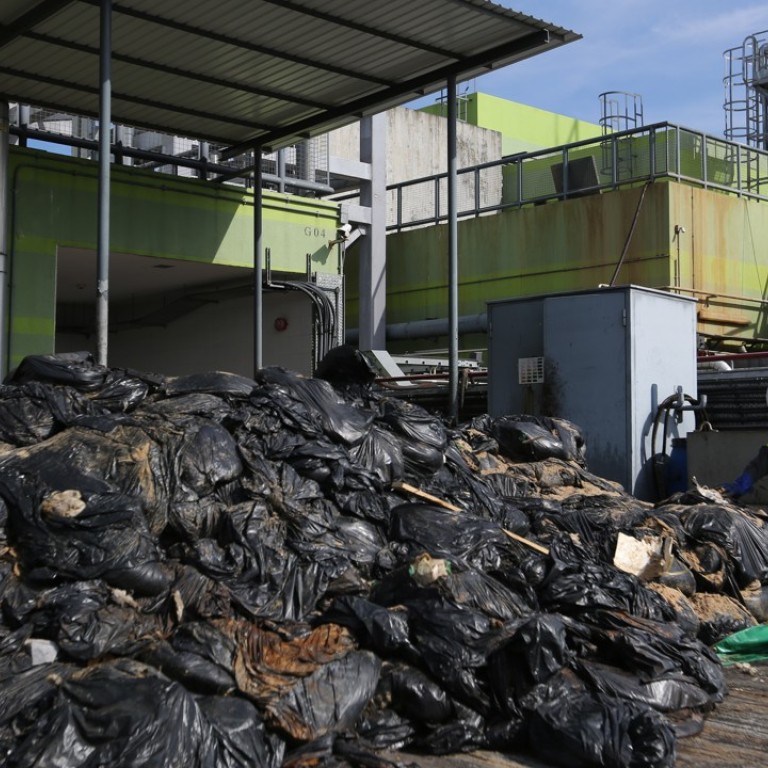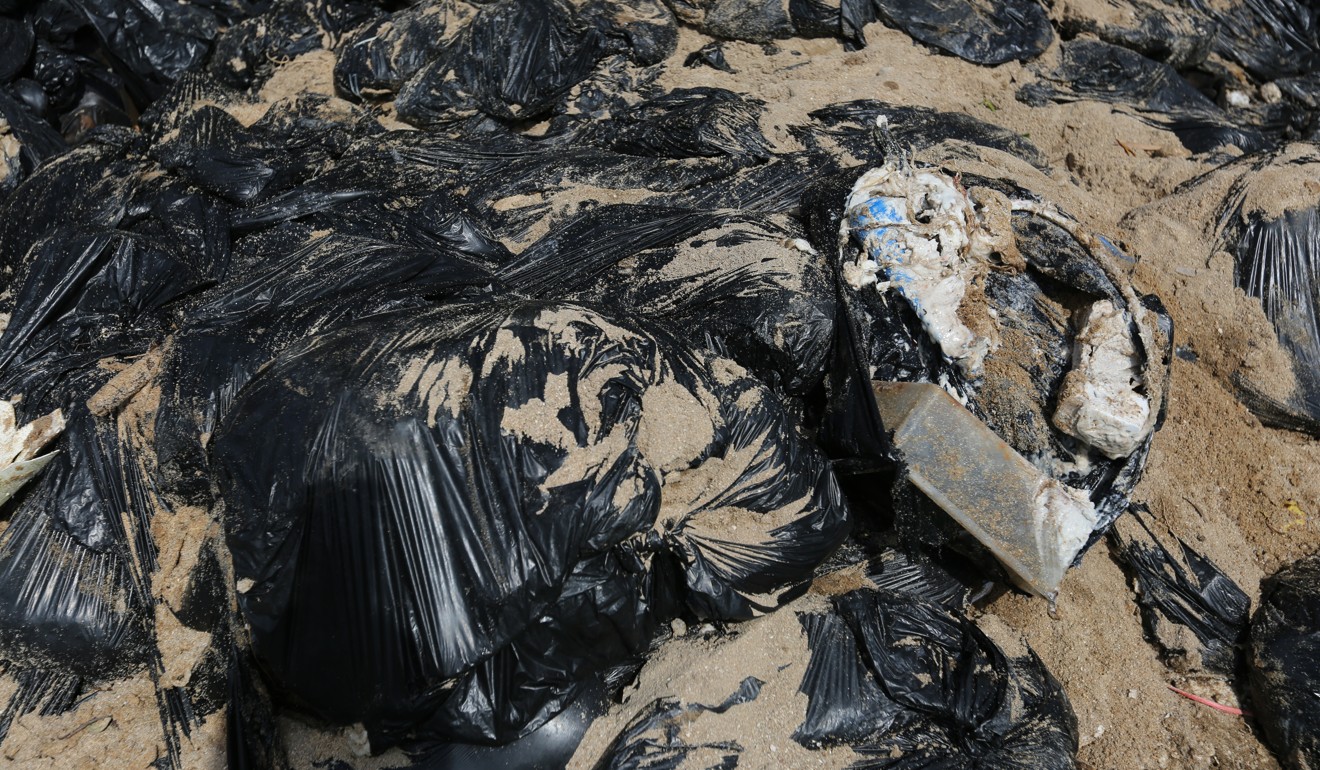
Palm oil that spilled onto Hong Kong’s beaches turned into crude gasoline
One hundred tons of palm oil – about the same weight as a blue whale and half the total amount that spilled in collision between two ships – will be turned into biodiesel and then crude gasoline for sale next week
Half of the palm oil washed ashore on beaches two weeks ago will be turned into 50 tons of crude gasoline to go on sale next week, according to a biodiesel company.
Hong Kong government struggles to clean up mess as palm oil spill spreads
The oil would first be turned into biodiesel, a green fuel that emits low levels of greenhouse gases when burned, and then crude gasoline to be sold next week, the city’s biggest waste oil treatment firm said.
“We have kept a watchful brief on the oil spill incident since it happened,” said CEO Cheung Siu-ming.

“We would like to help society solve the problem by turning the palm stearin into biodiesel and investing in society,” adding that all profits after operational costs would be donated to local green groups and NGOs, which have yet to be chosen.
Questions over two-day delay on notice of palm oil spill that left 11 Hong Kong beaches closed
About 40 per cent was contaminated, ASB said, meaning it had to be purified before being turned into biodiesel.
“The most difficult part is to separate the sand and the oil,” Cheung said. “We have to remove and treat this totally before we can process.” Any that is too contaminated to be purified will go to a landfill near the industrial estate.

The rest of the palm oil will be treated by a second biodiesel company.
Almost all palm oil has now been cleared from the city’s beaches and 11 out of the 13 that were closed have been reopened.
The Environmental Protection Department has promised to continue routine clean-up operations as trace amounts of palm stearin pellets may still be found in the sand.
“We can observe that there is almost no more palm stearin left in the water. Only a small amount is left on Lamma and along Hong Kong Island’s southern coasts”, environment undersecretary Tse Chin-wan said during an inspection at Middle Bay beach in Southern district a week ago.
A government spokesman said yesterday the Cape D’Aguilar Marine Reserve and the nesting site of Green Turtles in Sham Wan on Lamma Island have by and large been cleaned up. As at noon on Thursday, the government departments had collected some 211 tons of palm stearin recovered on the sea surface and at the beaches.

